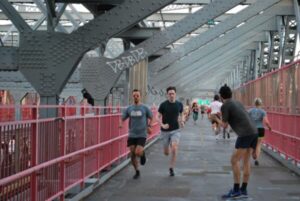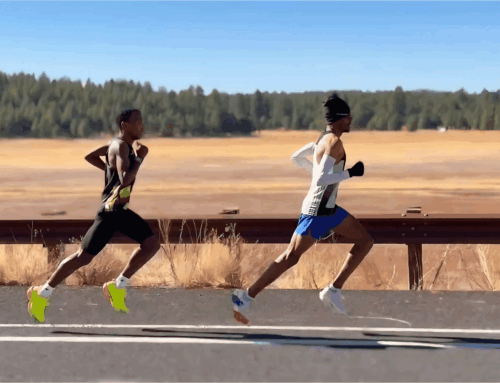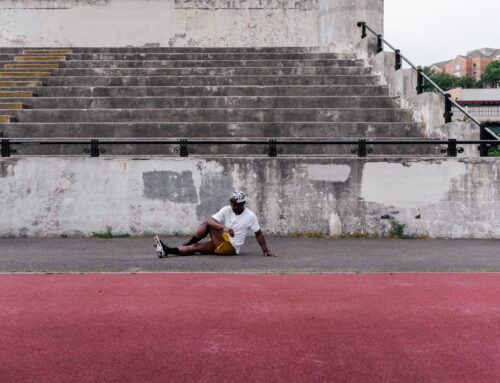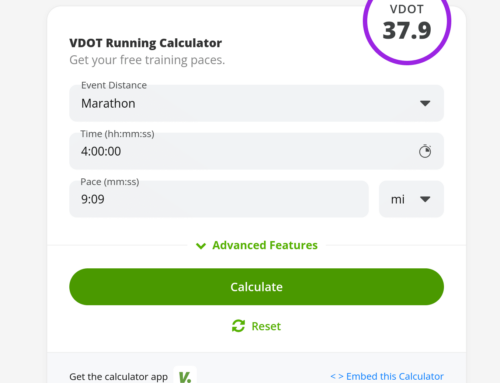
180 Steps Per Minute
When I am teaching a new group of runners the first thing I have them do is count their stride frequencies while running around the track. I can’t remember ever having one of these beginners who turned over as fast as 180 steps per minute. However, when my wife and I sacrificed some enjoyable race-watching moments at the 1984 Olympics to time and count stride rates among male and female runners in their important Olympic events, we found only one of about 47 athletes whom we observed, who took less than 180 steps per minute. Some of these “subjects” we were able to study on several days because they were involved in preliminary and final rounds in their event, so the observations involved more than just 47 incidents.
Stride Length Versus Rate
If you time a runner over a given distance (200 meters for example), and also time a specific number of steps during that same 200-meter segment of the race, you can calculate stride length. In the longer events we were able to count the same runners during several laps of the race, including the final lap when most put in a finishing kick. In the 10k, for example, we made a point of observing runners who dropped off the pack and what they lost in terms of stride rate and stride length. In all, we counted and timed both male and female runners in the 800m, 1500m and marathon, and also men in the 5k and 10k and the women in the 3k.
Probably the most striking finding was that rate varied little between men and women and among events of 3k and longer. This, of course indicates that the main means of running at different speeds is primarily a function of changes in stride length. There was no question that the 800m runners used the longest strides and also the fastest stride rate. The 1500m runners were also faster and longer than average for all runners with their rates and lengths, but beyond the 1500m distance, stride length was the main factor associated with differences in running speed. One gold medal winner in a distance race actually slowed turnover slightly during the final 200-meter kick, but most increased both stride rate and length during their final kick to the finish line.
Most Economical
Research has shown that most runners are most economical (use the least energy as measured by oxygen consumption during sub-maximal runs of a variety of speeds), when running at their self-chosen stride frequency. However, that can be misleading because it is not surprising to be most economical doing something that you practice doing day after day. In addition, I have often had runners change stride rate, from their chosen rate, usually to a faster rate, and seen improvement in running economy — immediately in some cases. I have never found a runner who slowed stride rate and became more economical, but I can’t say that is not a possibility for some individuals.
Of further interest is why elite runners use a faster turnover rate than do beginner runners. I have always assumed it is the result of years of training – they may find that a quicker turnover minimizes impact injury; that thousands of miles of running has encouraged the use of the least harmful approach to running stride.
There is no question that elite runners train and race faster than non-elites, so it makes some sense that they would turnover faster and take longer strides because they are always running faster. On the other hand, I have had elite runners run at a variety of speeds while I count their stride rates (without them knowing I was counting stride rate) and there is no question that rate is changed far less than is stride length. For example, one group ran several minutes at 7:00 per mile (230 meters per minute) pace, followed by several minutes at 6:00 (268 m/min) pace and finally 5:00 (322 m/min) pace, and stride rate averaged 184, 186, and 190, respectively. Stride rate increased 3.2%, speed increased by about 40%, and stride length increased by 35%.
Some runners purposely try to increase stride length in an attempt to run faster but stride length increases come as a function of being able to increase the amount of energy available per minute (or per stride) of running, and therefore conditioning is a major factor in this case. On the other hand, stride rate is much more a matter of just deciding to turnover at a different rate, and if that new turnover actually costs less energy, then that turnover is beneficial to performance. I tell my runners that stride rate is a voluntary thing and stride length is something you have to achieve through improvement in fitness.
Become a faster runner with Jack Daniels’ Custom Training Plans.




